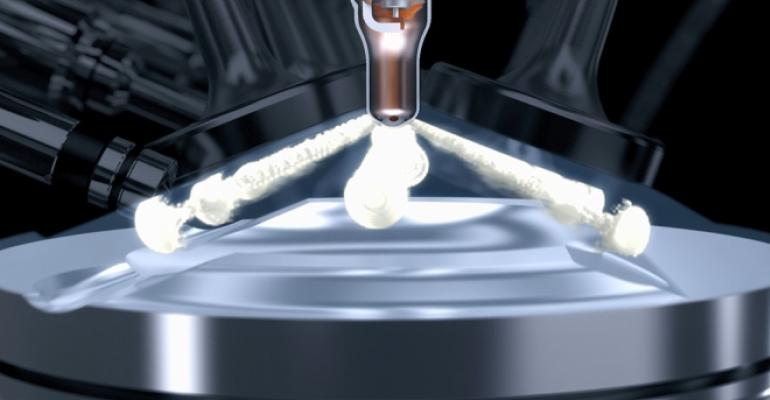Researchers at a Japanese university claim a breakthrough in advancing alternative-fueled internal-combustion-engine technology employing vortex induction.
One of the main challenges facing the growing interest in ammonia-burning ICE is the mixing of air sufficient to allow efficient ignition in the combustion chamber. Ammonia is seen as a more practical way of delivering hydrogen-based combustion because it doesn’t require special handling such as expensive high-pressure, temperature-controlled storage and transportation.
Now an engineering team at Sophia University in Tokyo claim they have cracked the problem of burning ammonia by exploring intake port opening conditions that lead to swirling flow in the combustion chamber.
Researchers say the findings could pave the way for ammonia-fueled vehicles, supporting the UN's Sustainable Development Goal for clean and sustainable energy.
Since 2019, a team from the university’s Department of Engineering, led by Professor Mitsuhisa Ichiyanagi, has been working to design engines where ammonia can be used as a standalone fuel. Their work focuses on intake port opening conditions that enhance the mixing of air with fuel inside the engine cylinder for more efficient combustion. In a study published in the journal Energies, the researchers determine intake port opening conditions that would lead to swirling flow conditions within the cylinder of an engine.
Swirling flow refers to a vortex-like pattern of air–fuel mixture entering the engine’s cylinder. This is advantageous as it promotes better mixing of air and fuel, creating a more homogenous mixture, leading to improved combustion and reduced emissions. The researchers conducted their investigation in an optical single-cylinder diesel engine with a glass cylinder and piston. For air intake, the engine used conventional tangential and helical intake ports.
To visualize the air flows in the engine, the researchers introduced silica particles with diameters of 4.65 µm as tracers during the intake stroke and monitored their movement in the engine with a high-speed CMOS camera. Air entering through the helical port develops into swirling patterns, while air from the tangential port initially produces no vortical structure. However, when redirected by the cylinder walls, it eventually generates swirling structures.
In their earlier experiments, the researchers observed that airflow velocity remained relatively constant across various helical port openings. So, leaving the helical port completely open, they varied the opening of the tangential port to 0 %, 25%, 50%, 75% and 100% to determine its effect on intake and in-cylinder flows during the intake and compression strokes.
The team found that the best results were achieved in the early stage of the compression stroke when the opening of the tangential port was more than 25%. The formation of swirl flows was observed to correlate with low variances of turbulent kinetic energy during the intake stroke and low variances of the swirl center position during the compression stroke.
Ichiyanagi now believes ammonia-powered ICE could be a practical alternative to expensive battery-electric vehicles whose requirement for huge amounts of rare materials, such as lithium, could threaten the speedy reduction in greenhouse gases generated by the transportation industry. He points out that the demand for lithium is expected to exceed 2.4 million metric tons by the 2030s, a significant increase from the 130,000 metric tons produced in 2022. According to the International Energy Agency, this could lead to potential lithium shortages as early as 2025. In such a situation, ammonia emerges as a promising alternative clean fuel.
Ichiyanagi says: “Airflow within cylinders profoundly affects combustion and emissions by influencing the air-fuel mixing phenomenon. With the aim of burning only ammonia, we have basically investigated the relationship between the engine's intake system and the flow inside cylinders. The development of ammonia-fueled-engine vehicles is expected to not only reduce carbon dioxide emissions from engines but also contribute to realizing a hydrogen energy society.”





